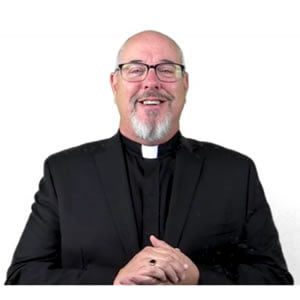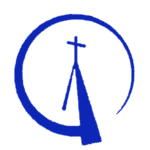
Guess the character and the name of the show he appeared in. Here are a few of his famous lines:
“This is the city, Los Angeles, California… I work here… I’m a cop.”
It was [day of the week and date], it was [weather conditions] in Los Angeles; we were working the [day/night] watch out of [police division]. My partner is [name]. The boss is [name]. My name’s Friday.”
“…That’s when I go to work; I carry a badge.”
Yes, it is Sergeant Joe Friday, from the TV show Dragnet. The line that is perhaps his most famous is this: “All we want are the facts, ma’am.” Clearly, John the Evangelist never met Joe. Mark’s gospel account contains “just the facts,” but John’s is full of detail: not just the “what” but the “why.” And when it comes to Jesus, John wants his readers/hearers to know exactly who Jesus is. And so, on day three of John’s account of Jesus’ ministry we learn more about this “word” (logos) of whom his prologue speaks. (Day 1, following the prologue, has the religious authorities questioning John the Baptist; day 2 is Jesus’ baptism; day 3 has John the Baptist’s declaration concerning Jesus; and day 4 is the second section of this week’s assigned text with the call of the first disciples.)
And what does John the Baptist declare? “Here is the Lamb of God who takes away the sin of the world!” (vs. 29). This is more than a mere title; it is intended to reveal who Jesus is; a manifestation of Jesus to the world (an epiphany). Is this a reference to the Passover lamb whose blood spared the Hebrew children from death at the hands of the Angel of Death? Is this the lamb that was sacrificed to God as a sin offering in the Temple? Or is this the Lamb of the Book of Revelation, the victorious (slain, but standing) risen Christ? As some scholars have suggested, it may a combination of the Old Testament lamb that dies for our sins and gives us life, and John the Evangelist’s lamb which is “the very one through whom God enters the human story offering redemption – an old symbol being used in a new way.”
Pope Sergius I (687–701) introduced John the Baptist’s words into the liturgy of the Western Church. This was his way of pushing back against the Eastern Church which in 692, at the Council of Trullo, stated that Jesus must only be depicted in icons as a man, and not a lamb. The following familiar chant was Sergius’ response, and it remains in the liturgy of the West – including Lutheran liturgies – to this day:
Lamb of God, who takes away the sins of the world, have mercy on us.
Lamb of God, who takes away the sins of the world, have mercy on us.
Lamb of God, who takes away the sins of the world, grant us peace.
Perhaps the most revealing component of John the Baptist’s declaration are the words, “of God.” This is the reason that the Baptizer goes on to state, “This is he of whom I said, ‘After me comes a man who ranks ahead of me because he was before me’” (vs. 30). This reflects the opening words of John the Evangelist’s beautiful prologue: “In the beginning was the Word” (1:1). And it is this declaration that sparks the interest of two of John the Baptist’s disciples, who overhear his declaration of faith and then approach Jesus. Their dialogue is short, but important:
Jesus: “What are you looking for?”
Disciples: “Rabbi… where are you staying?”
Jesus: “Come and see.”
And they “came and saw.” Then one of them, Andrew, went to his brother Simon (soon to be renamed Peter)
Andrew: “We have found the Messiah”
“He brought Simon to Jesus, who looked at him and said, ‘You are Simon son of John. You are to be called Cephas’” (vs. 38-42).
And so, a pattern begins to form. Jesus asks a question; a response is given; Jesus issues an invitation; and a relationship with the Anointed one begins. This is the origin of discipleship. We, who are part of the human story, encounter the one through whom God enters our story. And we are never the same again because the world is never the same again., because of the Lamb of God. What question is Jesus asking of you, and what will be your response? The Lamb waits to call you, “come and see.”


